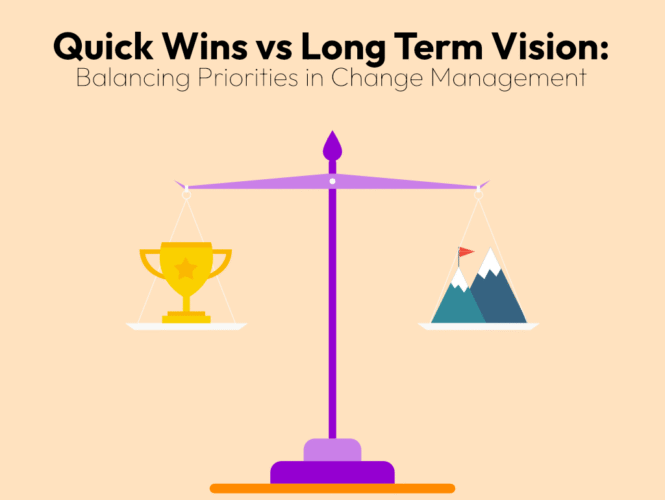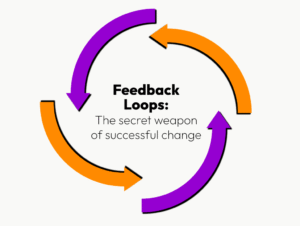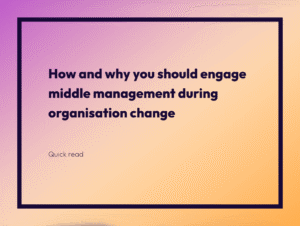Change management is never a straight path. Whether you’re rolling out a new system, restructuring teams, or shifting company culture, success hinges on how well you manage both short-term and long-term priorities. Striking the right balance between quick wins and long-term vision isn’t just a tactical decision, it’s a strategic necessity.
The Allure of Quick Wins
Quick wins are small, easily achievable improvements that demonstrate progress early in a change initiative. Serving a powerful purpose they:
- Build Momentum: Quick wins energise teams. They show that change is possible, which is essential in the early stages when scepticism and reluctance is high.
- Create Credibility: Leaders who deliver quick results earn trust, making it easier to ask for patience during more complex changes.
- Reduce Resistance: When people see tangible benefits from early efforts, they’re more likely to support the broader change initiative.
However, an overemphasis on quick wins can be dangerous. Teams might focus on low-impact initiatives just to “check the box,” potentially diverting energy from deeper transformation. Without a clear vision, these wins become isolated efforts rather than steps toward something bigger.
The Power of Long-Term Vision
A strong long-term vision sets the direction and ambition for change. It answers the question: Where are we going, and why does it matter? Having a long-term vision:
- Guides Decision-Making: A well-articulated vision helps prioritise efforts and ensures consistency across initiatives.
- Provides Purpose: It connects the day-to-day grind with a larger narrative, motivating teams to stay the course.
- Encourages Sustainable Change: Unlike quick fixes, long-term strategies tackle root causes and drive lasting improvement.
But visions alone aren’t enough. Without early results, even the most inspiring vision can feel abstract or out of reach. People need to see progress, not just hear about it.
The Balancing Act
So how do you strike the right balance? Here are four strategies for aligning quick wins with long-term goals:
1. Tie Quick Wins to the Vision
Every short-term success should be a building block toward the ultimate goal. When planning quick wins, ask: How does this advance our long-term objectives?
2. Sequence Efforts Intentionally
Map out your change journey with clear phases. Start with achievable goals that lay the groundwork for more complex changes. Think of it like scaffolding: each layer supports the next.
3. Communicate Progress Transparently
Highlight early wins and clearly link them to the broader transformation story. Celebrate success, but remind people why it matters in the bigger picture.
4. Build Feedback Loops
Quick wins offer a valuable opportunity to gather feedback. Use these moments to learn what’s working and what’s not, so you can adjust course as needed without losing sight of the end goal.
Final Thoughts
In change management, quick wins and long-term vision aren’t competing priorities — they’re complementary. Quick wins spark belief; long-term vision sustains commitment. Together, they create a rhythm of progress that builds both capability and confidence.
The organisations that thrive during transformation are the ones that understand this balance. They move fast enough to inspire, but steady enough to endure.
Join out community-based members platform for more tips and tricks on how to successfully implement lasting change!





